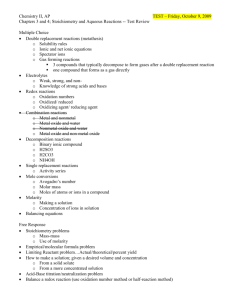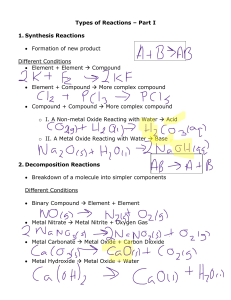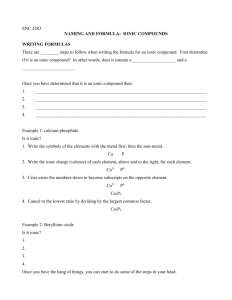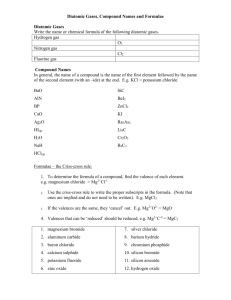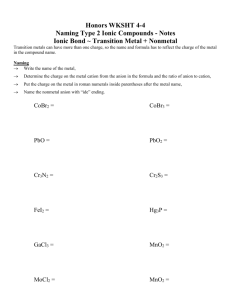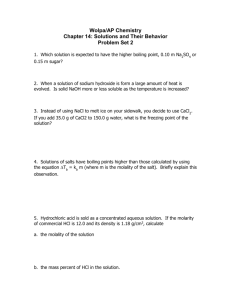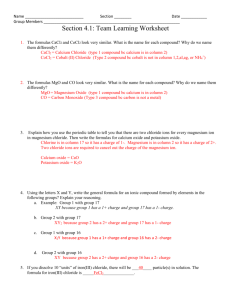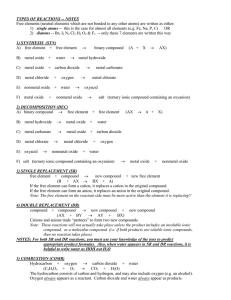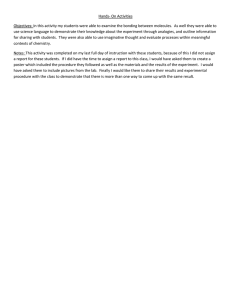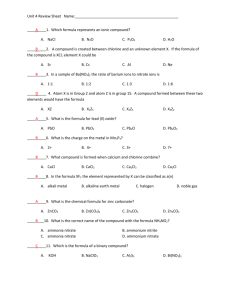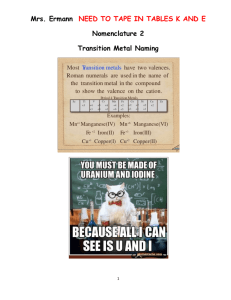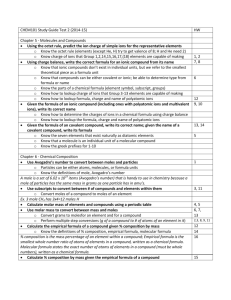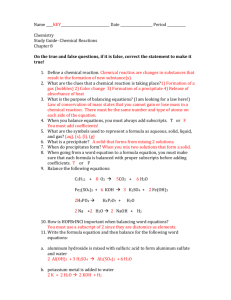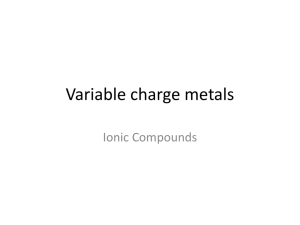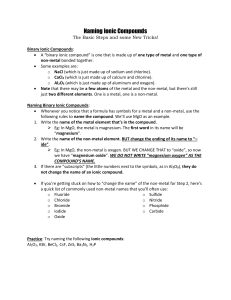Naming Ionic Compounds
advertisement
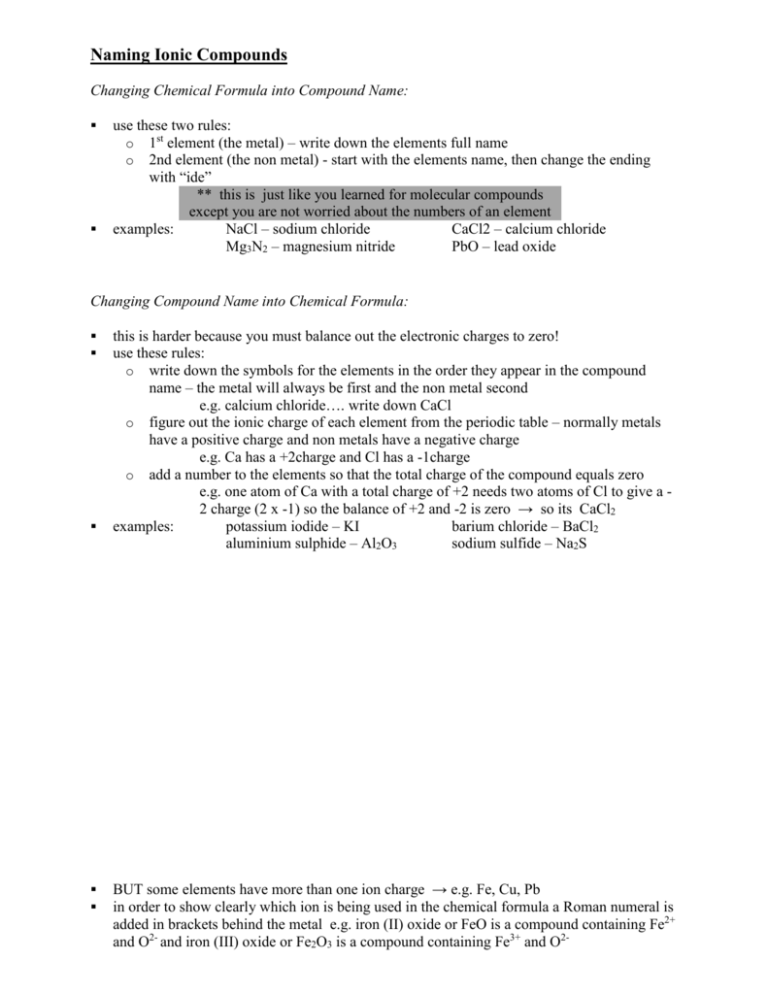
Naming Ionic Compounds Changing Chemical Formula into Compound Name: use these two rules: o 1st element (the metal) – write down the elements full name o 2nd element (the non metal) - start with the elements name, then change the ending with “ide” ** this is just like you learned for molecular compounds except you are not worried about the numbers of an element examples: NaCl – sodium chloride CaCl2 – calcium chloride Mg3N2 – magnesium nitride PbO – lead oxide Changing Compound Name into Chemical Formula: this is harder because you must balance out the electronic charges to zero! use these rules: o write down the symbols for the elements in the order they appear in the compound name – the metal will always be first and the non metal second e.g. calcium chloride…. write down CaCl o figure out the ionic charge of each element from the periodic table – normally metals have a positive charge and non metals have a negative charge e.g. Ca has a +2charge and Cl has a -1charge o add a number to the elements so that the total charge of the compound equals zero e.g. one atom of Ca with a total charge of +2 needs two atoms of Cl to give a 2 charge (2 x -1) so the balance of +2 and -2 is zero → so its CaCl2 examples: potassium iodide – KI barium chloride – BaCl2 aluminium sulphide – Al2O3 sodium sulfide – Na2S BUT some elements have more than one ion charge → e.g. Fe, Cu, Pb in order to show clearly which ion is being used in the chemical formula a Roman numeral is added in brackets behind the metal e.g. iron (II) oxide or FeO is a compound containing Fe2+ and O2- and iron (III) oxide or Fe2O3 is a compound containing Fe3+ and O2-
